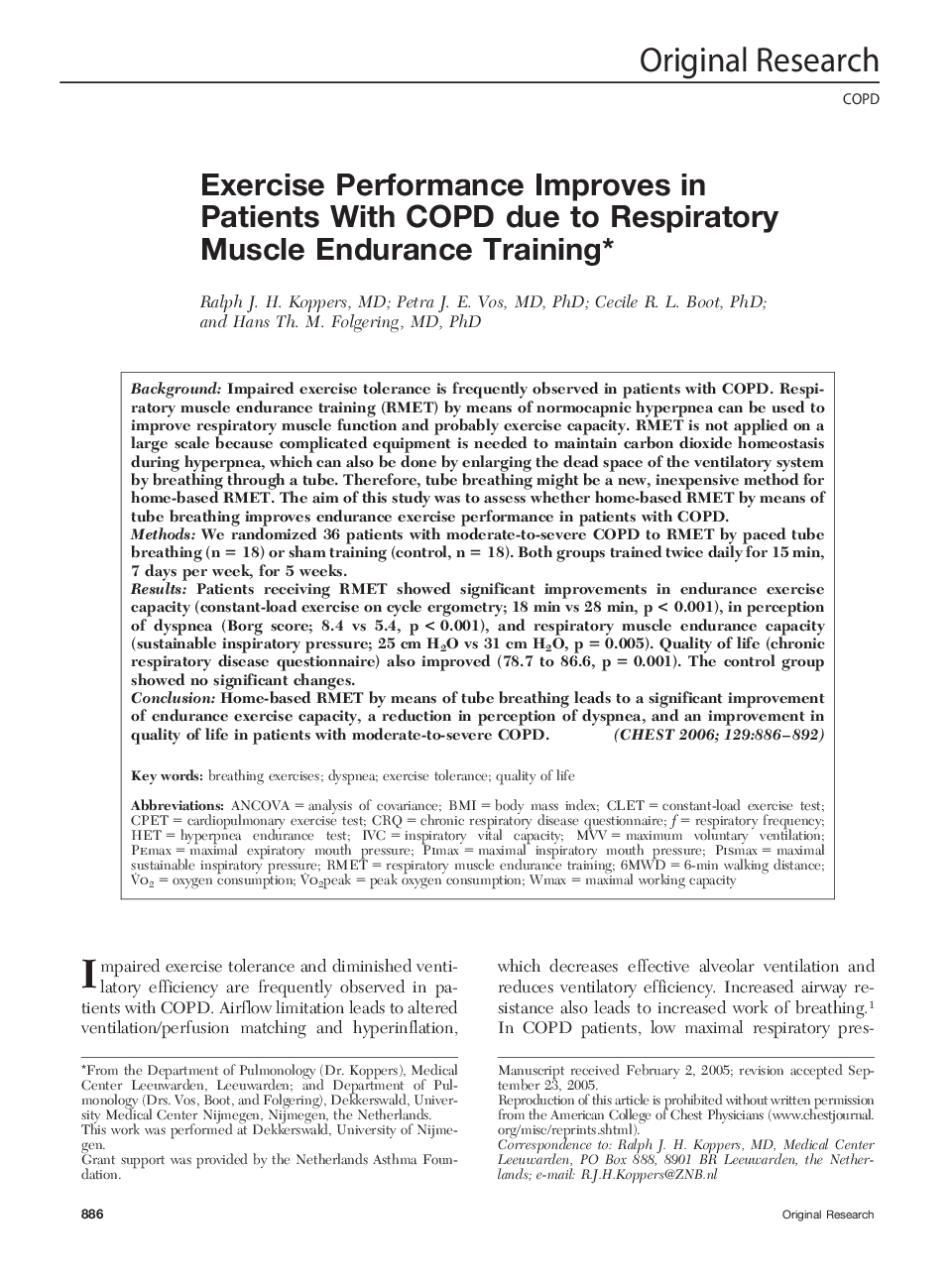| کد مقاله | کد نشریه | سال انتشار | مقاله انگلیسی | نسخه تمام متن |
|---|---|---|---|---|
| 2905582 | 1173431 | 2006 | 7 صفحه PDF | دانلود رایگان |

BackgroundImpaired exercise tolerance is frequently observed in patients with COPD. Respiratory muscle endurance training (RMET) by means of normocapnic hyperpnea can be used to improve respiratory muscle function and probably exercise capacity. RMET is not applied on a large scale because complicated equipment is needed to maintain carbon dioxide homeostasis during hyperpnea, which can also be done by enlarging the dead space of the ventilatory system by breathing through a tube. Therefore, tube breathing might be a new, inexpensive method for home-based RMET. The aim of this study was to assess whether home-based RMET by means of tube breathing improves endurance exercise performance in patients with COPD.MethodsWe randomized 36 patients with moderate-to-severe COPD to RMET by paced tube breathing (n = 18) or sham training (control, n = 18). Both groups trained twice daily for 15 min, 7 days per week, for 5 weeks.ResultsPatients receiving RMET showed significant improvements in endurance exercise capacity (constant-load exercise on cycle ergometry; 18 min vs 28 min, p < 0.001), in perception of dyspnea (Borg score; 8.4 vs 5.4, p < 0.001), and respiratory muscle endurance capacity (sustainable inspiratory pressure; 25 cm H2O vs 31 cm H2O, p = 0.005). Quality of life (chronic respiratory disease questionnaire) also improved (78.7 to 86.6, p = 0.001). The control group showed no significant changes.ConclusionHome-based RMET by means of tube breathing leads to a significant improvement of endurance exercise capacity, a reduction in perception of dyspnea, and an improvement in quality of life in patients with moderate-to-severe COPD.
Journal: Chest - Volume 129, Issue 4, April 2006, Pages 886–892